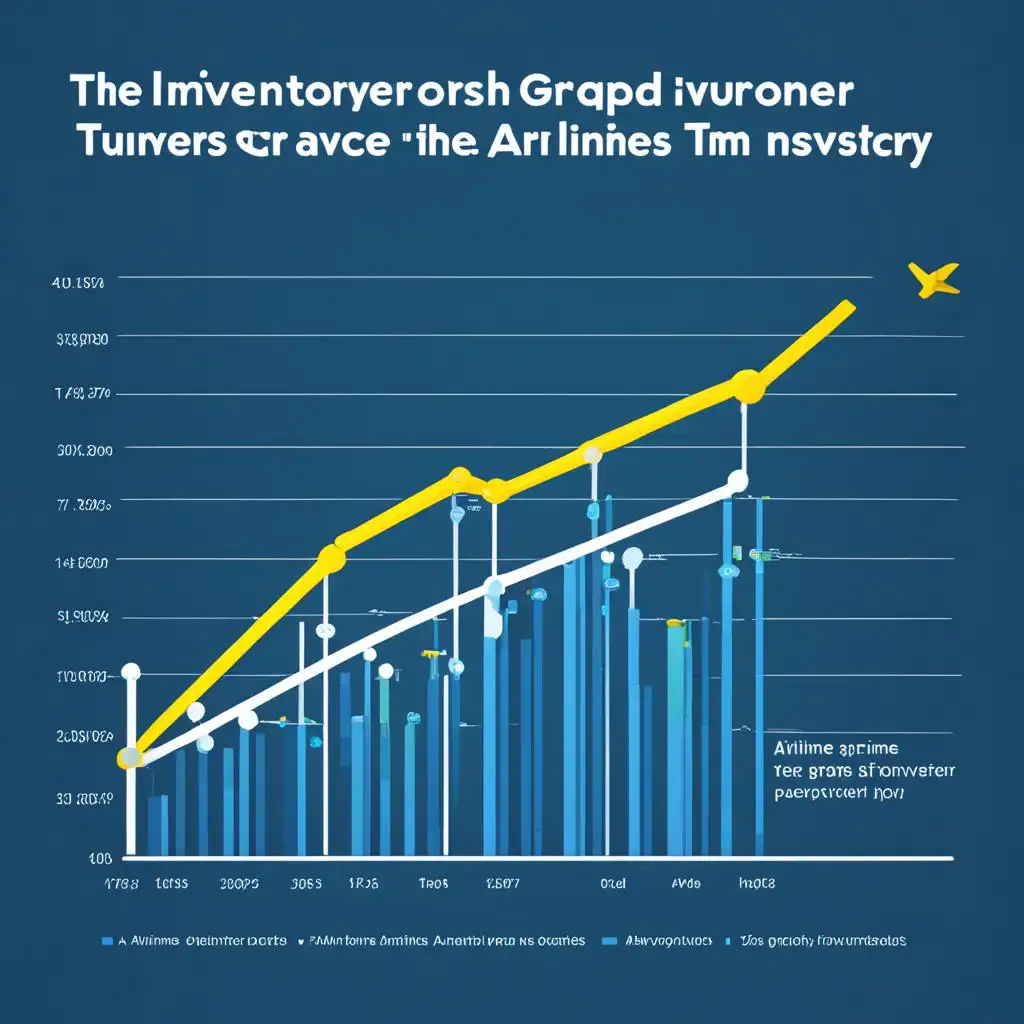Have you ever wondered how airlines calculate their inventory turnover? Is it a complex equation that only financial experts can decipher? Or is it a simple formula that anyone can understand? In this article, we will demystify the concept of inventory turnover in the airline industry and explore how it is calculated.
Inventory turnover is a key metric that measures how efficiently a company manages its inventory by determining how many times it sells or replaces its inventory within a specific period. But when it comes to the airline industry, the calculation may appear to be a bit more complex than in other sectors.
So, how exactly do airlines calculate their inventory turnover ratios? And why is it important for airlines to have a high turnover ratio? Join us as we delve into the intricacies of inventory turnover in the airline industry and uncover its significance for operational efficiency and cost control.
Importance of Inventory Turnover in the Airline Industry

In the airline industry, effective inventory turnover plays a critical role in ensuring efficient operations and maximizing profitability. With a wide range of inventory, including spare parts, food and beverages, and fuel, airlines need to carefully manage their inventory to avoid excessive holding costs and reduce the risk of obsolete or perishable items.
By calculating inventory turnover, airlines can assess how quickly they are able to sell or use their inventory. This calculation provides valuable insights that enable airlines to make informed decisions about replenishing stock and optimizing their inventory management processes.
A high inventory turnover ratio indicates that an airline is efficiently managing its inventory, minimizing storage costs, and reducing the likelihood of holding obsolete or perishable items. This efficiency leads to improved cash flow and better resource utilization, ultimately enhancing the airline’s competitive advantage.
On the other hand, a low inventory turnover ratio suggests that an airline may be holding excess inventory. This can lead to increased holding costs, potential waste, and missed opportunities for revenue generation. Airlines with low turnover ratios may need to reevaluate their inventory management strategies, implement better forecasting techniques, and adjust purchasing strategies to optimize their inventory levels.
By maintaining an optimal inventory turnover ratio, airlines can achieve cost control, improve cash flow, and enhance their overall operational efficiency. Effective inventory management enables airlines to minimize waste, reduce holding costs, and meet customer demands promptly, further strengthening their position in the competitive airline industry.
Calculating Inventory Turnover in the Airline Industry

To calculate inventory turnover in the airline industry, you need two key pieces of data: the cost of goods sold (COGS) and the average inventory value. COGS represents the direct cost associated with producing or purchasing the products sold to consumers. The average inventory value is calculated by taking the sum of the inventory levels at the beginning and end of a specified period and dividing it by 2.
The formula to calculate inventory turnover ratio is:
Inventory Turnover Ratio = COGS / Average Inventory Value
This ratio provides valuable insights into the efficiency of inventory management in the airline industry. By measuring how quickly inventory is sold or used, airlines can assess their operational effectiveness and make informed decisions about purchasing and replenishing stock.
Calculating inventory turnover helps airlines optimize resource utilization, minimize holding costs, and avoid the risk of obsolete or perishable inventory. It is a useful metric for evaluating the overall health of an airline’s inventory management practices.
Examples of Inventory Turnover in the Airline Industry
In the airline industry, inventory turnover can vary significantly based on the unique operations and business models of different airlines. Here are some real-world examples that showcase how inventory turnover is calculated:
-
Example 1: Airline A
Airline A reports a COGS of $2 million for the year. The average inventory value at the beginning and end of the year is $500,000 and $700,000, respectively. To calculate the inventory turnover ratio for Airline A, we can use the formula:
Inventory Turnover Ratio = COGS / Average Inventory Value
Inventory Turnover Ratio = $2,000,000 / (($500,000 + $700,000) / 2)
Inventory Turnover Ratio = $2,000,000 / $600,000
Inventory Turnover Ratio = 3.33
-
Example 2: Airline B
Airline B has a COGS of $5 million and an average inventory value of $1.2 million. Applying the same formula, we can calculate the inventory turnover ratio for Airline B:
Inventory Turnover Ratio = $5,000,000 / $1,200,000
Inventory Turnover Ratio = 4.17
-
Example 3: Airline C
Airline C has a COGS of $3.5 million and an average inventory value of $900,000. Let’s calculate the inventory turnover ratio for Airline C:
Inventory Turnover Ratio = $3,500,000 / $900,000
Inventory Turnover Ratio = 3.89
These examples highlight the range of inventory turnover ratios that can be observed in the airline industry. It’s important for airlines to track and analyze their inventory turnover to identify areas for improvement and ensure efficient inventory management.
Analyzing and Improving Inventory Turnover in the Airline Industry
When it comes to managing inventory in the fast-paced and competitive airline industry, analyzing the inventory turnover ratio is crucial for optimizing operations and improving overall profitability. A low inventory turnover ratio can indicate several inefficiencies, such as supply chain issues, overstocking, or slow-moving inventory.
In order to address these challenges and improve inventory turnover, airlines can implement various strategies. One key approach is to enhance forecasting techniques that can accurately predict demand patterns and optimize inventory levels accordingly. By having a better understanding of when and how much inventory is needed, airlines can minimize the risk of overstocking and reduce holding costs.
Another important area for improvement is purchasing strategies. By establishing stronger relationships with suppliers and negotiating favorable terms, airlines can optimize their inventory procurement process and ensure timely delivery of materials. This can help prevent stockouts, minimize lead times, and ultimately improve inventory turnover.
Furthermore, improving marketing efforts can also play a significant role in boosting inventory turnover. By effectively promoting certain products or services, airlines can increase demand and stimulate sales. Incorporating targeted marketing campaigns, partnerships, and loyalty programs can drive customer engagement and generate higher demand, leading to improved inventory turnover.
In conclusion, analyzing and improving inventory turnover is essential to maximize operational efficiency and profitability in the airline industry. By identifying the underlying causes of low turnover and implementing strategies to overcome them, airlines can reduce holding costs, minimize waste, and meet customer demands more effectively. Smart inventory management practices are key to success in this highly competitive industry.
FAQ
Q: How do you calculate inventory turnover in the airline industry?
A: To calculate inventory turnover in the airline industry, you can use the equation: Inventory Turnover Ratio = Cost of Goods Sold (COGS) / Average Inventory Value.
Q: What is the importance of inventory turnover in the airline industry?
A: Inventory turnover is crucial for efficient operations in the airline industry. It helps determine the efficiency of inventory management and can inform pricing decisions, marketing efforts, and purchasing strategies.
Q: How do you calculate inventory turnover in the airline industry?
A: To calculate inventory turnover in the airline industry, you need two key pieces of data: the cost of goods sold (COGS) and the average inventory value. COGS represents the direct cost associated with producing or purchasing the products sold to consumers. The average inventory value is calculated by taking the sum of the inventory levels at the beginning and end of a specified period and dividing it by 2.
Q: Can you provide examples of inventory turnover in the airline industry?
A: Inventory turnover in the airline industry can vary depending on the specific operations and business model of each airline. Examples of calculating inventory turnover can be illustrated using the cost of goods sold (COGS) and the average inventory value.
Q: How can analyzing and improving inventory turnover benefit the airline industry?
A: Analyzing the inventory turnover ratio in the airline industry can provide valuable insights for improving inventory management. By identifying the reasons for a low turnover ratio, airlines can take steps to address these issues and optimize their inventory management processes. This can involve implementing better forecasting techniques, adjusting purchasing strategies, or improving marketing efforts to increase demand for certain products. By improving inventory turnover, airlines can reduce holding costs, minimize waste, and enhance profitability.
